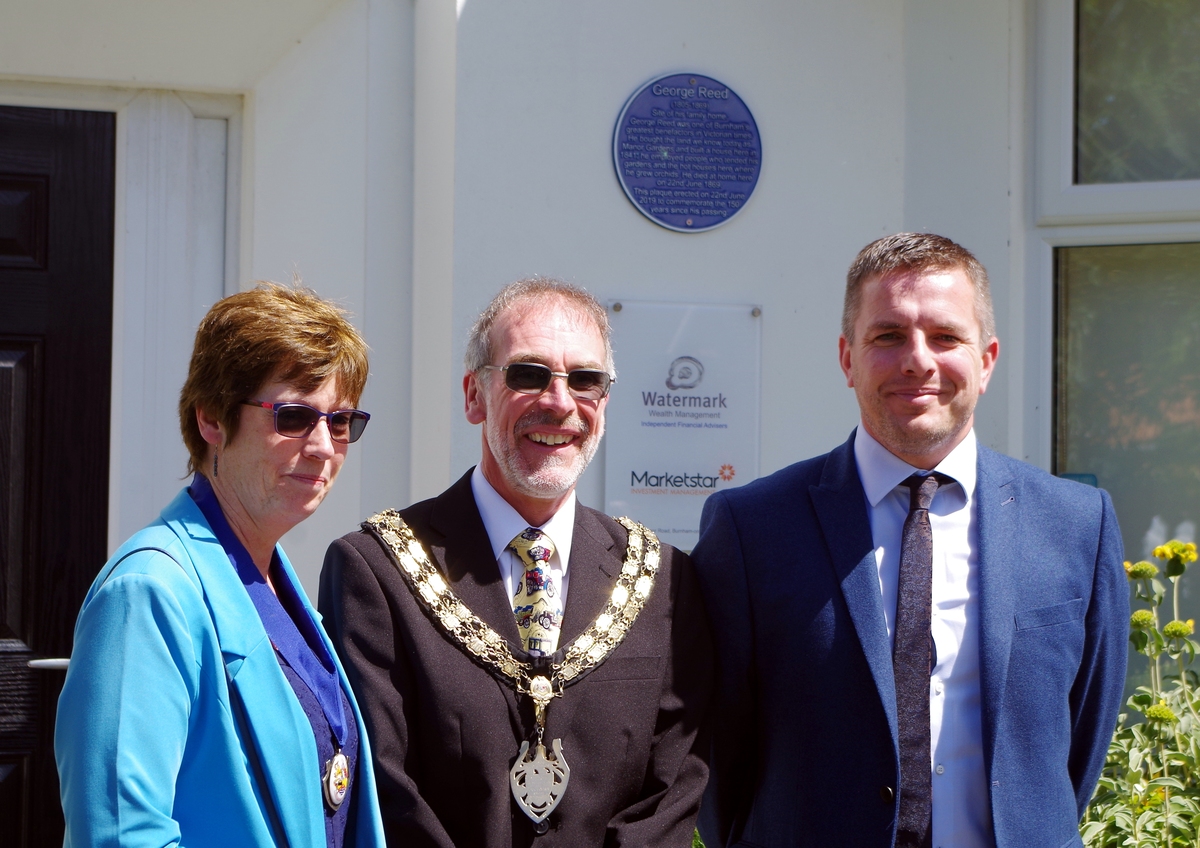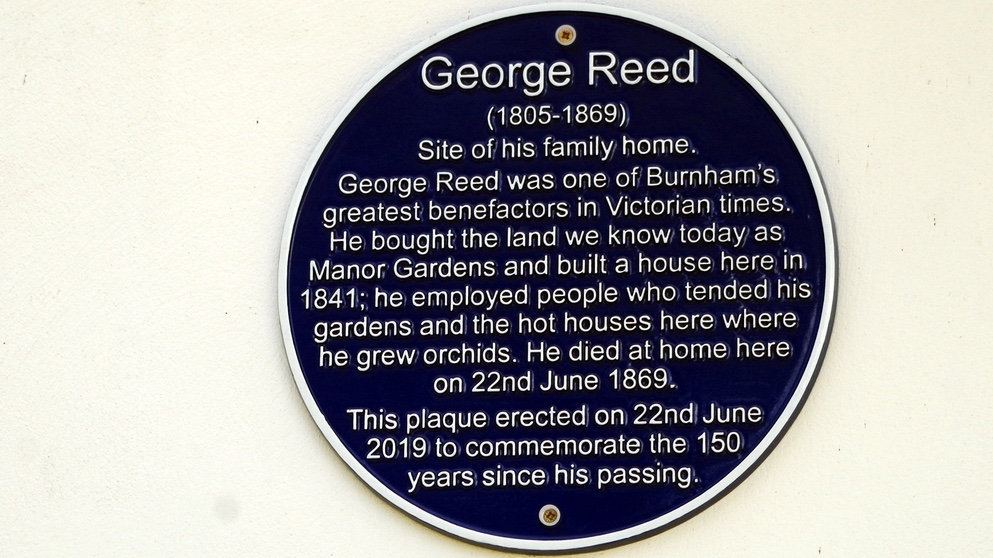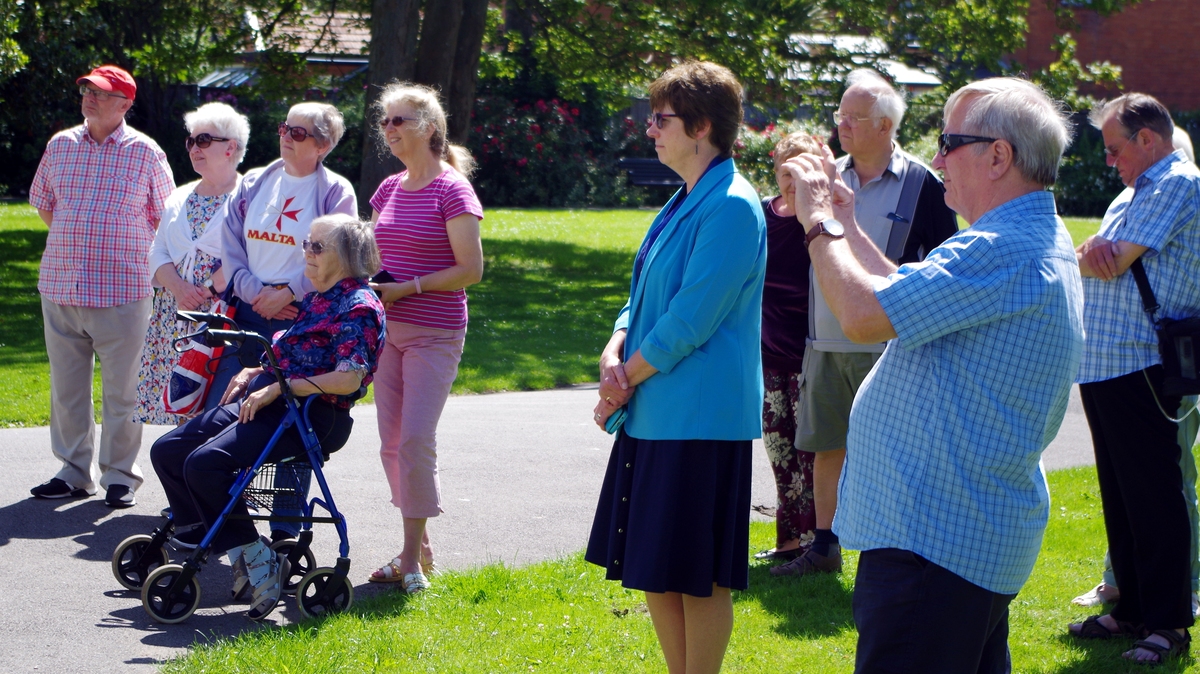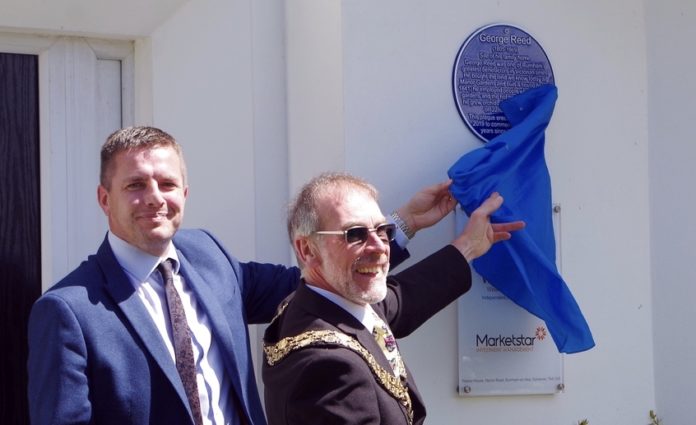A special blue plaque commemorating the 150th anniversary of George Reed, Burnham-On-Sea’s greatest benefactor during the Victorian period, has been unveiled at a special ceremony.
Burnham’s Mayor, Cllr Andy Brewer, unveiled the plaque in the town’s Manor Gardens on Saturday (June 22nd), as pictured here.
George Reed was responsible for a great number of significant changes to the town from his arrival in the late 1830’s to his death at the Manor House on 22nd June, 1869.

To commemorate the 150th anniversary of his passing, two short ceremonies have been arranged by North Sedgemoor Local History group when blue plaque unveilings taking place.
The first was held at the Manor House in Burnham’s Manor Gardens on Saturday (22nd June) and this will be followed on Friday 28th June at 1.30pm at St Andrew’s School.
There is also a travelling photographic display and this will be on show at Burnham’s Library from 24th June to 4th July, and at St Andrew’s Church from 6th-14th July.

Burnham historian John Strickland explained the historical significance behind George Reed during Saturday’s unveiling, pictured here: “In 1805 George was baptised in Holy Trinity Church, Westbury on Trym. His mother was Susanna Cavil. In 1836 Joseph Haythorne, George’s step-father, bequeathed £2,000 to him with the balance of his estate to George’s mother Susanna. This amounted to sixteen million pounds in today’s money. Susanna purchased lands including the title Lord of East Brent which George inherited on his mother’s death. She also bequeathed all her money to George.”
“The 1841 records show George as living in ‘Church St’ (now Manor Road), Burnham. It is recorded he lived in an old house situated between Brunswick Terrace and the site of the current Manor Gardens. In the same year he had the first Manor House built as his new residence. He built stables and employed gardeners to tend his orchids in his several hot houses in the gardens we see today. He continued to be a noted orchid grower for many years and exhibited as far away as London.”
“He was very public spirited. In 1849 he was Chairman of the Burnham & Highbridge Board of Health and installed improved sanitation and drainage to land in Burnham. August 1866 saw him unveil the foundation stone for Burnham’s Gas Works (where Lidl’s is now) also produced a plan for installing gas street lighting.”

“He funded the building of many properties including: Lucerne Cottage built on the Berrow Road; Catherine and Julia Terraces, named for his daughter and granddaughter; the new National School on the sea front (later named St Andrews); also The Reed’s Arms and was involved in many other property transactions.”
“He funded and was pivotal in building the Jetty for a steam ship service from Cardiff and in bringing the Somerset Central Railway into Burnham on 3rd May 1858. To aid this he purchased a locomotive and also a steam ship.”
“George opened his Manor House Gardens to the public in 1859. The Burnham Guide of that year says he opened his gardens and extensive hothouses… every Tuesday and Friday between the hours of 11am and 4pm upon application to the head gardener.”
“His sons, George and Joseph, daughter Sarah and his wife Sarah all predeceased him. He continued to live in his home here with this daughter and son-in-law Catherine and John Fryer. He had been found to have a heart condition and died in his bedroom here on 22nd June 1869 by natural causes.”
“We are grateful to Watermark Wealth Management for donating this plaque.”
Pictured: Saturday’s unveiling in Burnham (photos: David Pearce)







